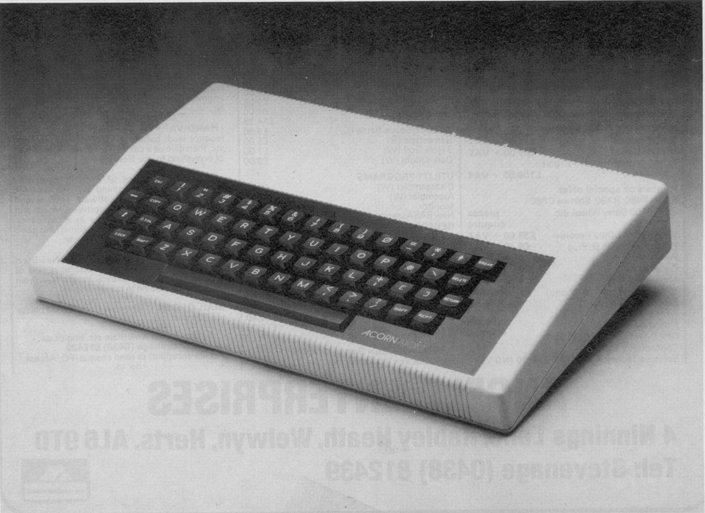The good news is that the introduction of Acornís under £200 Electron micro has forced the price of the ageing Acorn Atom to as low as £50. But the bad news is that those stock-clearing prices mean the Atom is going out of production - and that software and peripherals for the machine are going to be hard to find in the future.
The Atom was a good deal in its day. It isnít much larger than the Electron and for £174 offered between 2 and 12K of RAM, ROM-based software and a printer inter- face on the expanded version of the machine. It was originally a kit-machine for enthusiasts, who had to build it before they could use it - but in latter days it has been offered in ready-made form for a slightly higher price.
It was small and uncluttered inside, so there was little room for expansion circuitry. Only a couple of expansion boards could be fitted to the machine and the colour card tended to heat up.
Some of the facilities now on offer for the Electron and the BBC were first tried on the Atom. Econet, Acornís local area network system, was first configured on the Atom and many schools still use Econetted Atoms in conjunction with BBC systems.
The Electron also inherits the same processor as the Atom - the 6502.
The Atom used a more idiosyncratic Basic than the Electron, but a BBC Basic board was available for it. This gave the machine much the same capabilities as the Electronís implementation of BBC Basic.
The Atom version of BBC Basic also didnít use all the BBC sound commands and only partially implemented its VDU commands. But it did allow for the tidy DEF and PROC keywords as well as the CHAIN command.
A disk system was even offered for the machine. It cost about twice as much as a new Atom and was consequently not a big seller. The disk system is not yet on offer for the Electron, although Acorn says it plans to make available in the future an expansion interface that will allow the machine to run BBC disk drives. The Atom disk pack was considerably larger and heavier than the computer itself it was actually an Olivetti OPE FD 501 with 92K on a standard 5&quarter;-inch single- sided drive. It had its own power supply - which in turn supplied power to the Atom - and used a disk operating system in ROM.
Again like the Electron, the Atom used a separate power supply which put the
Besides the obvious differences in memory and language, the addition of colour in the Electron puts it in a class apart from the Atom. Although a colour card could be purchased for the Atom, it was never known as .a particularly reliable device.
The Atom did shine, however, as a programming machine - offering both the Forth and Lisp languages on cassette. Itís likely that the BBC versions of those languages will be made available for the Electron on plug-in ROMs when the Electron plug-in ROM card is ready.
In short, the Electron has as much (if not more) in common with the phased-out Atom than it does with the BBC. The prices of the two machines are similar, they use the same processors, have the same keyboards and offer much the same standard facilities.
It does seem odd, however, that Acorn has introduced us to the ELECTRONic age after putting us through the ATOMic age. But then who ever said computing was a logical business? Geof Wheelwright
